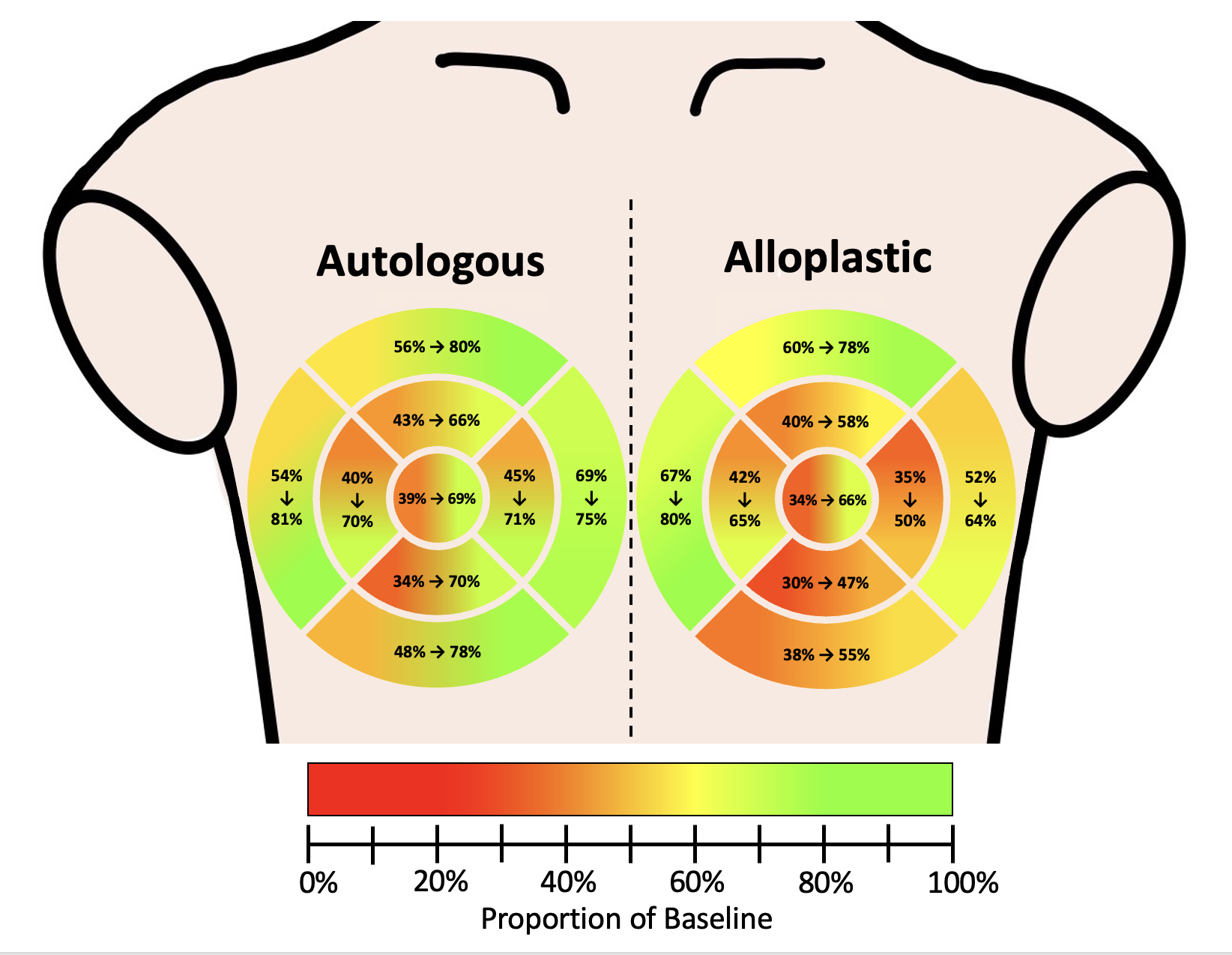An Evolving Landscape: The Return of Breast Sensation After Mastectomy Varies by Anatomic Region
Grant G. Black*, Yunchan Chen, Ashley Zhang, Marcos Lu Wang, Hao Huang, David Otterburn
Plastic and Reconstructive Surgery, Weill Cornell Medicine, New York, NY
Loss of breast sensation after mastectomy has been well documented. Postoperative reinnervation of the breast is influenced by factors including reconstructive technique, patient comorbidities, and adjuvant treatment. However, little attention has been paid to the differences in sensation across regions of the breast.
Women undergoing nipple-sparing mastectomy with immediate autologous or alloplastic reconstruction were prospectively followed. Neurosensory testing was performed in nine breast regions using a pressure-specified sensory device. Patients were stratified by reconstructive technique, and regional sensation was compared at different pre- and post-operative timepoints using Studentís t-tests.
233 patients were included; some underwent testing at multiple timepoints, accounting for a total of 770 breast measurements. 132 patients received neurotized DIEP flap reconstruction, and 101 received tissue expander-based (TE) reconstruction. In the first year after mastectomy for both reconstructive groups, the nipple-areola complex (NAC) and inner breast regions experienced a greater decrease in sensation than the outer regions compared to baseline values (27% of baseline vs. 50%, p<0.001). At 5 years postoperatively, inner regions recovered 61% of baseline sensation compared to 75% in the outer regions (p<0.001). By 5 years post-mastectomy, sensation in the DIEP cohort was comparable to that of the TE cohort in the superior and medial regions. However, the inferior and lateral quadrants only recovered 72% sensation relative to the DIEP cohort (p<0.01).
Though patients undergoing breast reconstruction experience increased breast sensation over time, the return of sensation is influenced by reconstruction type, reinnervation techniques, and anatomic region. Regions closer to the nipple experience slower and decreased sensation return. Alloplastic reconstruction results in decreased return of sensation compared to autologous reconstruction, particularly in the inferior and lateral quadrants of the breast.

Breast sensation by reconstructive type and anatomic region, from 1 year after mastectomy to 5+ years after mastectomy. All data is shown in percentages of region-specific preoperative baseline values.
Back to 2023 Posters


